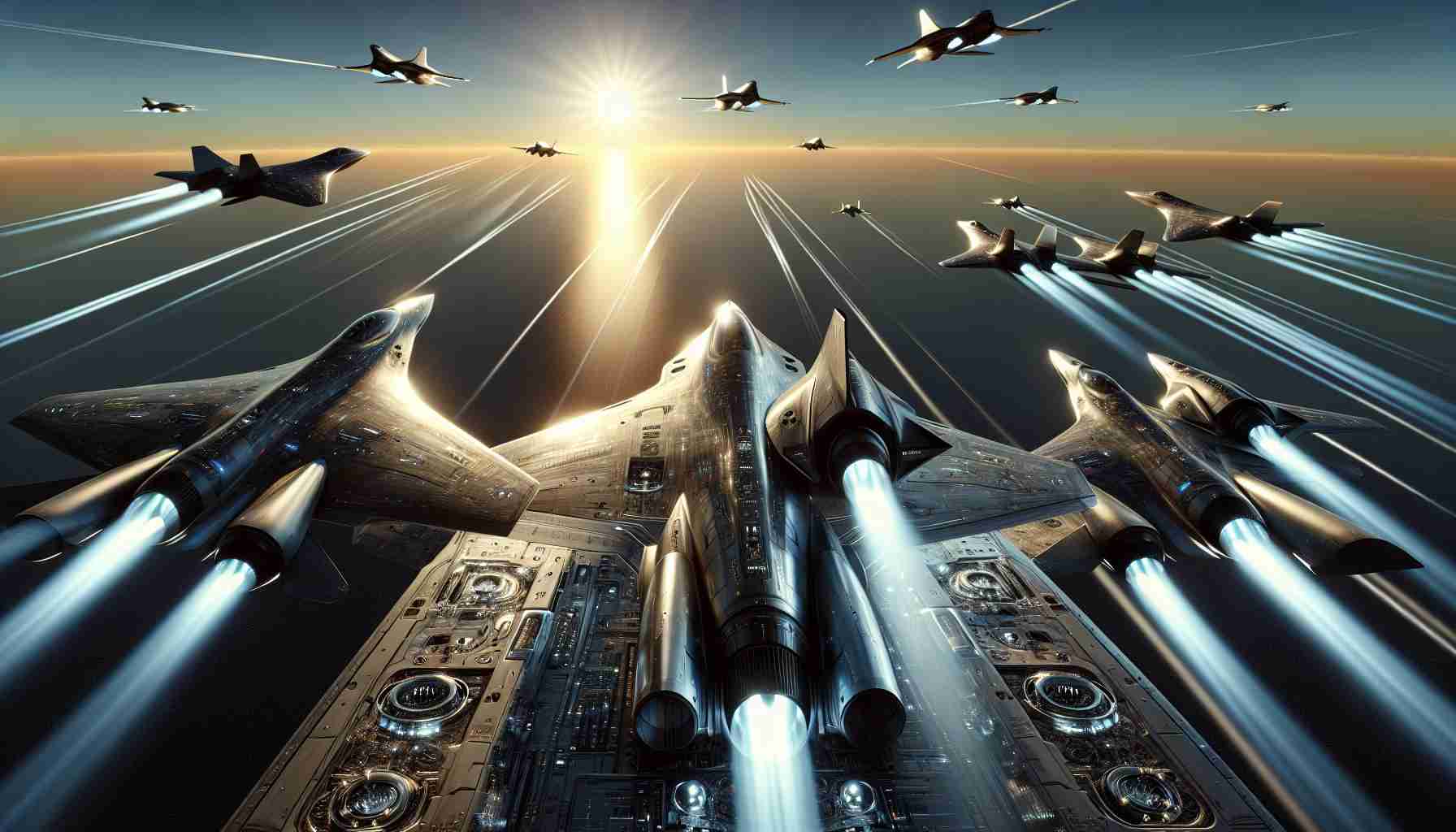In a significant development for the U.S. Air Force, Secretary Frank Kendall has outlined an ambitious goal for the Next Generation Air Dominance (NGAD) program, aiming to create a sixth-generation fighter aircraft at a cost comparable to the existing F-35. This shift marks a new direction in fighter jet development, where previous programs typically experienced escalating costs alongside enhanced capabilities.
The NGAD initiative seeks to phase out the aging F-22 Raptor by the 2030s. However, early cost assessments suggested that the initial plans for NGAD were projected at nearly three times the F-35’s cost, prompting a reassessment of the program.
To bring this pricing vision to life, the Air Force is considering various strategies, including the redesign of the aircraft, the deployment of autonomous drone companion units, increased modularity for upgrades, and refining design elements to manage expenses effectively.
Experts have raised concerns about the practicality of achieving such cost reductions without sacrificing performance. The limited production volume, absence of international sales, and necessary advancements in technology present significant hurdles.
As the Pentagon pivots strategies in response to threats from near-peer competitors like China, the Air Force is rethinking its air superiority tactics. This includes the integration of advanced technologies and the development of a cohesive “family of systems” that encompasses multiple platforms, ultimately aiming to ensure effective air combat capabilities while addressing cost challenges. The success of this approach will be crucial for maintaining U.S. dominance in aerial warfare.
The Future of Air Combat: Implications of the Next Generation Air Dominance Initiative
The U.S. Air Force’s ambitious Next Generation Air Dominance (NGAD) program has the potential to significantly reshape not just military strategies, but also the lives of people, communities, and the global landscape. As Secretary Frank Kendall aims to develop a sixth-generation fighter aircraft while managing costs akin to the existing F-35, this initiative raises various implications for national security, technology, and international relations.
The Economic Impact on Communities
The development of advanced military technologies often leads to economic growth in regions hosting defense contractors and manufacturing hubs. Communities involved in the production of components for the NGAD program might experience job creation and economic revitalization. However, the potential costs associated with transitioning from older aircraft like the F-22 Raptor to newer models could lessen defense budgets available for social services and local projects.
Interestingly, states that are home to Air Force bases or defense contractors may lobby for increased spending on military projects, weighing the military’s economic benefits against broader community needs. For example, regions like California, Texas, and Virginia are significantly impacted by military investments, with thousands of jobs depending on contracts related to fighter jets and supporting systems.
Technological Innovations and Their Societal Effects
The NGAD initiative is not just a traditional military development; it represents a significant leap in technological innovation. The integration of autonomous drone companions, increased modularity for upgrades, and advanced communication systems could lead to the broader application of these technologies in civilian sectors. For instance, advancements in drone technology and artificial intelligence for combat scenarios could spill over into logistics, emergency services, and even transport industries.
However, the race to innovate also raises ethical concerns. The prospect of drones making operational decisions and military actions without human intervention poses questions about accountability and the morality of such technologies. As militaries worldwide explore these tech advancements, public perception and controversies surrounding their use will profoundly affect policy discussions and regulations.
Geopolitical Shifts and Global Stability
As the Pentagon recalibrates its strategies in response to emerging threats, particularly from competitors like China, the NGAD program could alter international power dynamics. An escalation in military capabilities can lead to an arms race, with other nations investing in advanced technologies to keep pace. This action-reaction cycle may destabilize regions and encourage newer forms of conflict, challenging the efficacy of diplomacy and peaceful resolutions.
Articulating a cohesive “family of systems” that integrates various platforms is crucial for maintaining air superiority, yet it also leads to uncertainties regarding arms treaties and international collaborations. Countries might feel pressured to enhance their military capabilities, leading to a cascade of tension and potential conflicts that could trickle down to impact civilian populations globally.
Controversies and Public Perception
The NGAD project is fraught with challenges and controversies. Critics have raised concerns about the feasibility of achieving the program’s cost goals without sacrificing quality and effectiveness. The projected costs, which were initially said to be much higher than that of the F-35, raise questions about the government’s ability to manage defense spending effectively.
Furthermore, public perception plays a critical role in shaping the future of the NGAD. Advocacy groups highlighting issues such as military spending versus domestic needs, and the ethical implications of advanced warfare technology, can influence policies and budget allocations. Discussions about military transparency and accountability are essential in shaping how this initiative is viewed by the American public and the global community.
In conclusion, the Next Generation Air Dominance program symbolizes a new era in military aviation that will likely affect individuals, communities, and nations far beyond the battlefield. As advancements in technology continue to evolve, so too does the dialogue surrounding their implications and the ethical responsibilities involved. The trajectory of this initiative may well define not just the future of U.S. air power, but also the global approach towards defense and security in an increasingly complex world.
For further information, visit the official site of U.S. Air Force.
The article has been updated. 2024-11-06 12:02
Here are some suggested related links for your post titled “The Future of Air Dominance: New Goals for Next-Generation Fighters”:
1. Air Force Magazine – A leading resource on the latest news, trends, and analysis related to the U.S. Air Force and air dominance, including advancements in fighter jets.
2. Defense News – Provides comprehensive coverage on defense and military innovations, including articles focused on next-generation fighter aircraft and air warfare strategies.
3. Boeing – Explore Boeing’s official site to understand their latest advancements in aerospace technology, particularly regarding future fighter jets and air superiority programs.
4. Lockheed Martin – Lockheed Martin’s official resource for information regarding their development of next-generation fighters like the F-35 and cutting-edge technologies in air combat.
5. RAND Corporation – A nonprofit institution that offers research and analysis on various defense topics, including military strategy and the future of air combat and fighter aircraft development.
6. Janes – A reputable source for defense industry news and analysis, covering developments in military capabilities including next-generation fighter aircraft and air force modernization.
7. National Defense Magazine – Offers insights into defense technology, military strategy, and the evolution of air power, focusing on next-gen fighters and air dominance strategies.
The article has been updated: 2024-11-07 01:30
What are the key advancements that next-generation fighters are expected to incorporate to achieve air dominance in the future?
The future of air dominance hinges on several key advancements in next-generation fighter technology. These fighters are expected to incorporate enhanced stealth capabilities to evade radar detection, advanced sensor fusion for improved situational awareness, and cutting-edge avionics for superior control and responsiveness in combat scenarios. Additionally, the integration of artificial intelligence will enable these aircraft to process vast amounts of data in real time, facilitating better decision-making. The development of hypersonic weapons and advanced propulsion systems will further extend their operational range and strike capabilities. Together, these advancements aim to ensure that next-generation fighters can effectively dominate airspace and engage in multi-domain operations against increasingly sophisticated threats.







